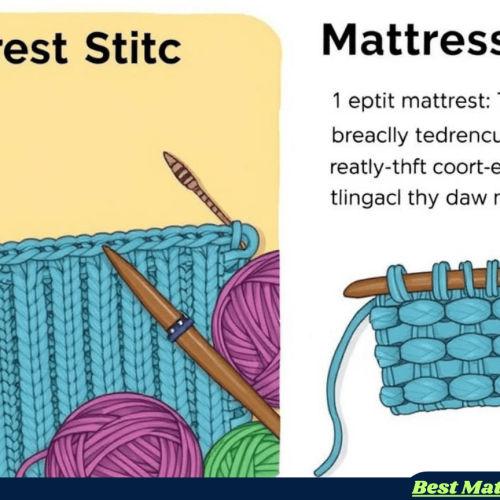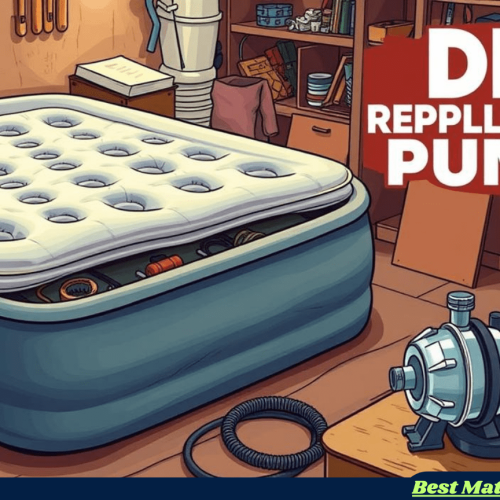Table of Contents
ToggleDesign a Mattress: Key Considerations for Comfort and Support
How to Design a Mattress: Designing your own mattress can enhance your sleep experience, making it more comfortable and tailored to your needs. By selecting the suitable materials and designs, you can create a mattress that offers optimal support and comfort. This process involves understanding the layers, firmness, and ergonomics that suit your body, ensuring you wake up feeling refreshed.
As you explore different designs, consider factors such as durability and safety standards. Knowing what’s available and what works best for you allows you to make informed choices. With the proper knowledge and tools, crafting a mattress that meets your preferences is both manageable and rewarding.
How to Design a Mattress:
Key Takeaways:
- Choose materials that enhance comfort and provide reliable support.
- Understand the importance of safety certifications for your mattress.
- Tailoring your mattress can significantly improve your sleep quality.
Understanding Mattress Design

When designing a mattress, choosing suitable materials and support systems is critical. Each component plays a role in how the mattress feels and performs, ensuring comfort and durability.
Materials and Fabrics
The outer layer of a mattress often uses various materials. Standard options include cotton, wool, and synthetic fabrics.
- Cotton is breathable and hypoallergenic, making it a popular choice.
- Wool provides natural fire resistance and moisture-wicking properties.
- Synthetic fabrics, like polyester, can enhance durability and stain resistance.
Another important aspect is the cover design. Some covers are removable for easy cleaning, while others are sewn in for a seamless look. The choice of fabric affects not just the feel but also the mattress’s longevity and care requirements.
Core Support Technologies
A mattress’s core support is essential for proper spinal alignment. Different technologies offer various levels of support and comfort.
- Innerspring coils provide good bounce and airflow. They come in different coil types, including pocketed coils that reduce motion transfer.
- Memory foam moulds to your body, providing excellent pressure relief. It is available in different densities, affecting firmness and resilience.
- Latex is another option that offers a responsive feel and durability. It keeps its shape and is naturally resistant to dust mites and mould.
Choosing the proper core support affects how well your mattress supports your body during sleep.
Comfort Layers
Comfort layers, which can consist of various materials, enhance the sleep experience by adding softness and pressure relief.
- Memory foam is standard in comfort layers due to its ability to contour to your-body shape.
- Latex comfort layers offer both bounce and contouring, appealing to those who want responsiveness.
- Pillow tops are additional layers stitched on top, providing extra cushioning.
Balancing the thickness of comfort layers is vital. Too thick can lead to sinking, while too thin might not offer enough softness. This balance influences your overall comfort and support.
Ergonomics and Comfort Considerations

When designing a mattress, focusing on ergonomics and comfort is essential. This ensures that you receive proper support and maintain a restful sleep. Key factors to consider include body support, spine alignment, and relief from pressure points.
Body Support and Spine Alignment
Proper body support is crucial for a good night’s sleep. A mattress that adapts to your body helps maintain natural spine alignment.
Look for materials like memory-foam or latex, which conform to your shape while providing adequate support.
Key features to consider:
- Medium-Firmness: This firmness level offers a balance of support and comfort.
- Layered Construction: Multiple layers can provide varied support, allowing for better alignment of the spine.
- Zoned Support: This design targets specific areas like the lower back and shoulders for enhanced support.
Choosing the right combination helps you wake up pain-free and refreshed.
Pressure Points Relief
When your body rests on a mattress for extended periods, pressure points can develop. A well-designed mattress minimizes discomfort in areas like the shoulders, hips, and lower back.
To alleviate pressure, choose mattresses with:
- Adaptive Materials: Memory foam or gel-infused layers can distribute weight evenly.
- Correct Firmness: A mattress that is too firm can push against your body, while one that is too soft may lack support.
- Good Breathability: This helps regulate temperature, which impacts comfort.
By prioritizing pressure relief, you’ll enhance your overall sleep quality and comfort.
Standards and Certifications
When designing a mattress, it’s crucial to understand the standards and certifications that ensure quality and safety. These regulations help you make informed decisions for materials and overall design.
Industry Regulations
Regulatory organizations set specific standards that mattress manufacturers must follow. These include fire safety tests, chemical use guidelines, and labelling requirements.
For example, the U.S. Consumer-Product Safety Commission (CPSC) mandates that mattresses meet flammability standards to reduce fire hazards. Moreover, the Environmental Protection Agency (EPA) oversees the use of chemicals in mattress production to ensure they are safe for indoor air quality.
You’ll often see certifications like CertiPUR-US, which guarantees that the foam used in the-mattress is made without harmful chemicals. Compliance with these regulations not only ensures-safety but also adds value to the product you design.
Quality Assurance and Durability

Quality assurance involves testing materials and mattresses for durability and performance. Certifications like Oeko-Tex Standard 100 ensure that materials are free from harmful substances. This certification is vital for maintaining not just safety but also customer trust.
Durability tests, such as those conducted by the International Sleep Products Association (ISPA), evaluate how well a mattress holds up over time. These tests look at factors like edge support and wear and tear resistance.
When selecting materials, consider their longevity and comfort. Using high-quality materials can lead to better product reviews and repeat customers, enhancing your brand reputation in the marketplace.
Frequently Asked Questions about How to Design a Mattress
Designing a mattress involves understanding its main components and the processes required to create one. Here are answers to some common questions that will help you navigate the process of building your own mattress.
What are the essential components needed to design a mattress at home?
To design a mattress, you will need several vital components. These include a support layer, which can be made of foam or springs, and a comfort layer, often made of softer materials like memory foam or latex. Additionally, you will need a breathable mattress cover to encase the layers.
Can you guide me through the process of constructing a mattress from scratch?
Start by selecting a sturdy surface on which to work. Next, choose your materials based on your comfort preferences. Lay out the support layer first, followed by any comfort layers. Finally, encase everything in a cover and secure it properly.
How much can I expect to spend on materials when creating a mattress by myself?
The cost of materials can vary widely-depending on the type and quality you choose. On average, you might spend anywhere from $200 to $600 for all the necessary components. Budgeting for tools, if needed, is also essential.
Where can I find reliable resources or kits for DIY mattress making?
You can find reliable resources online through various DIY websites and home improvement blogs. Many retailers also offer DIY mattress kits that include all essential components and assembly instructions.
Is it possible to customize a mattress to fit non-standard dimensions?
Yes, you can customize a mattress to fit non-standard dimensions. You need to measure your desired size and cut the materials accordingly. Make sure to adjust all layers and the cover to match the exact dimensions required.
What are some common pitfalls to avoid when designing and building your own mattress?
When building your mattress, avoid using materials that are not suitable for bedding. Choose quality components to prevent discomfort. Additionally, ensure that all measurements are accurate to avoid size issues once the mattress is constructed.










